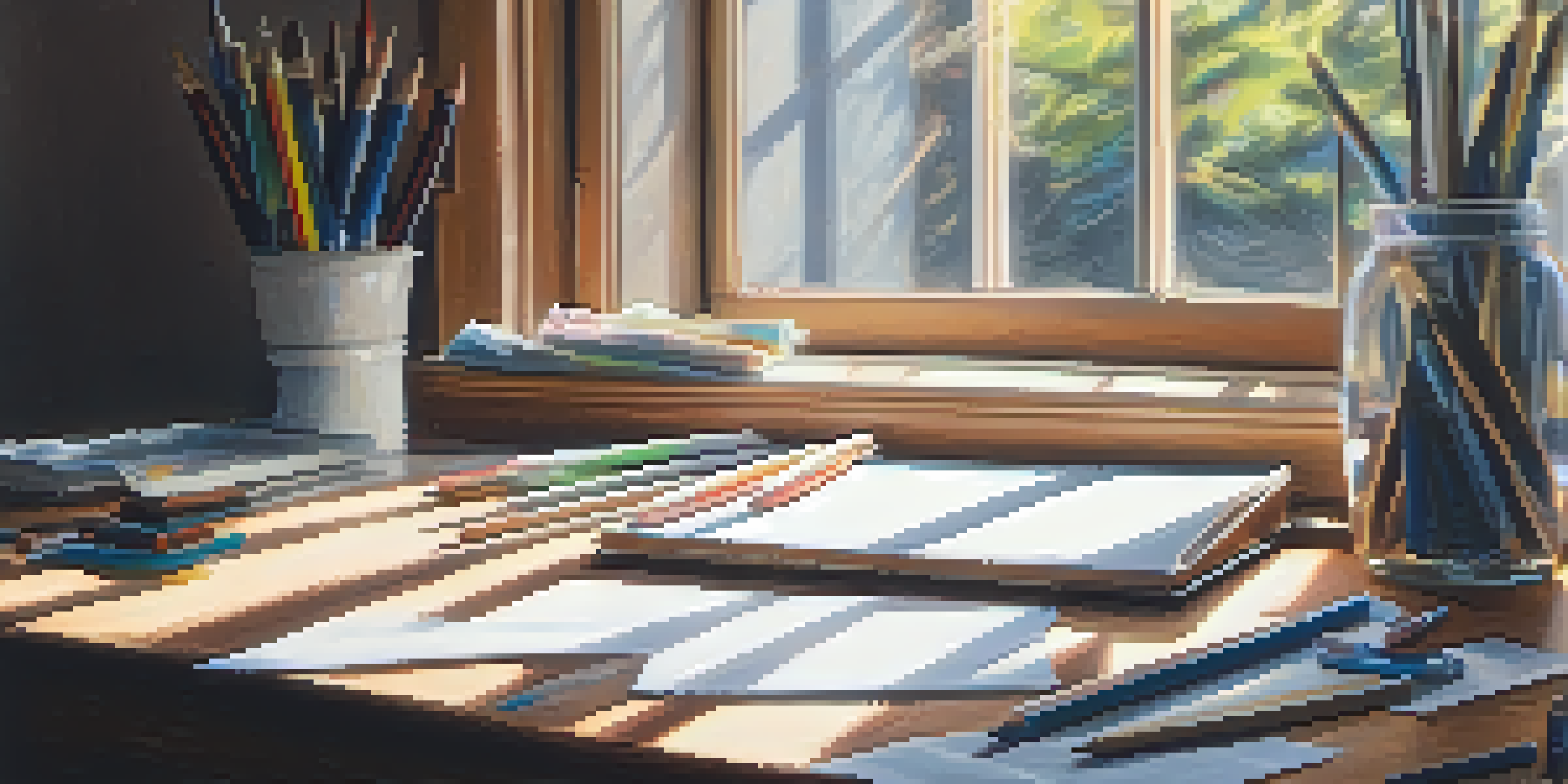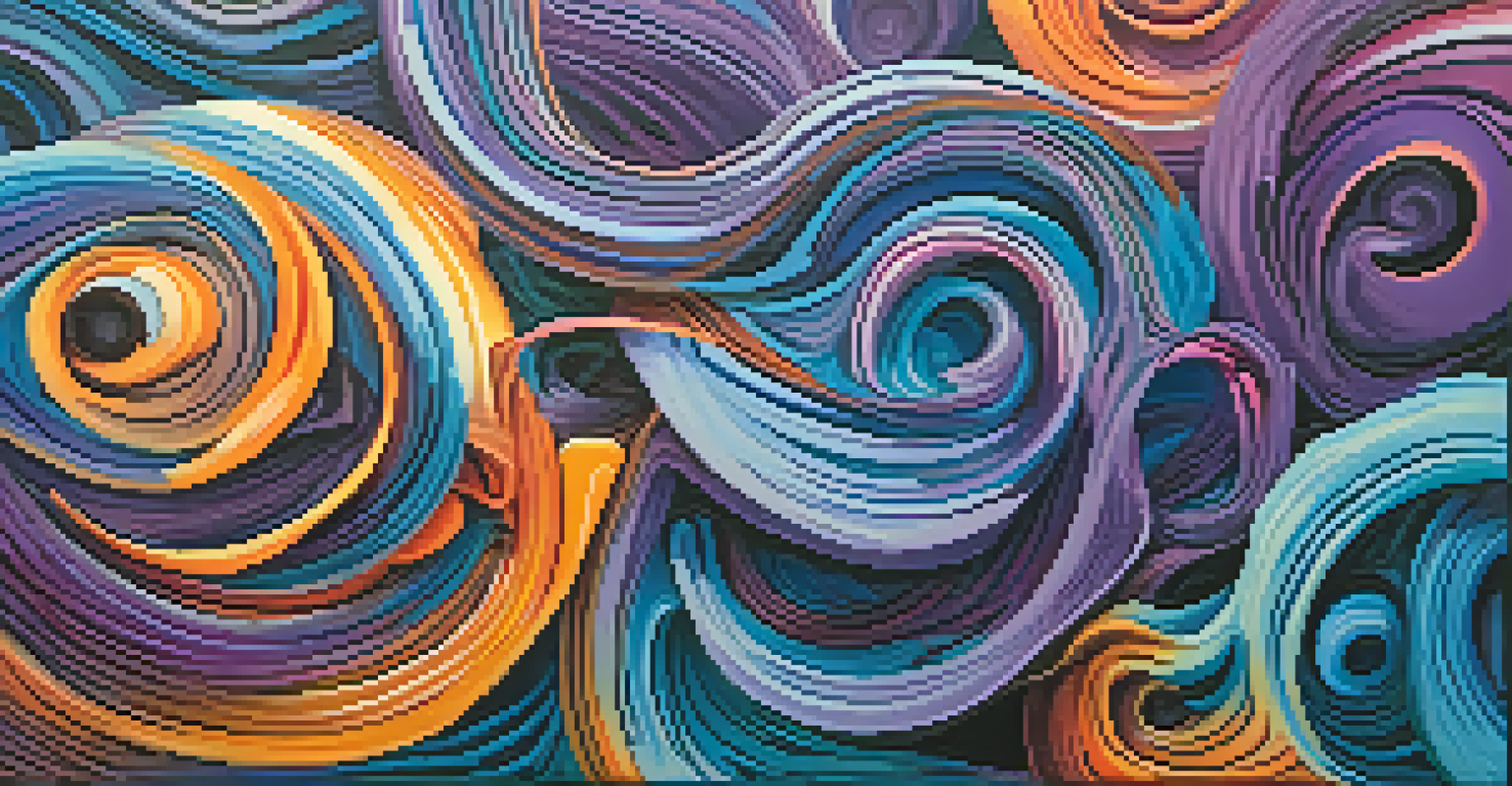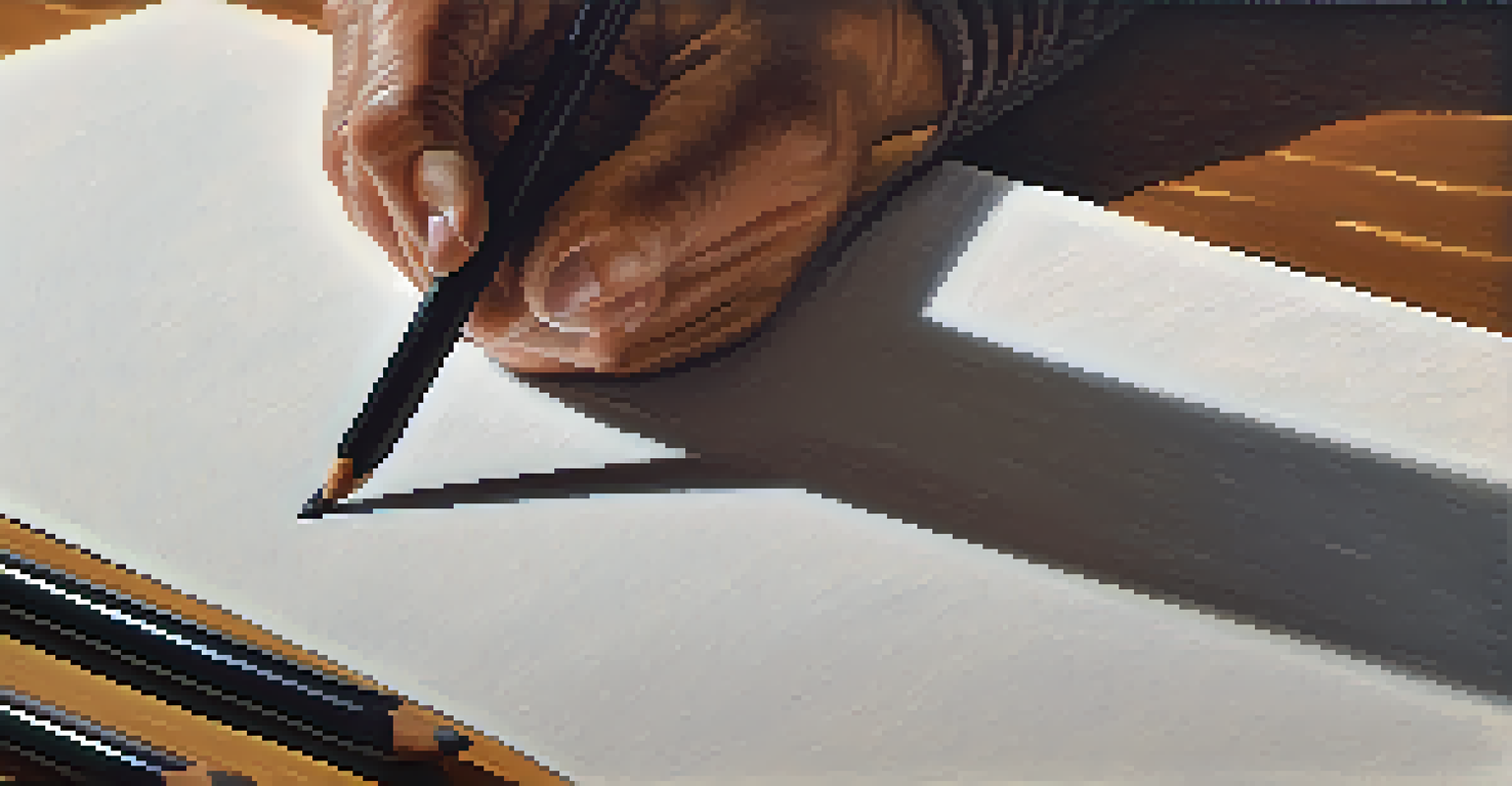The Process of Automatic Drawing: A Subconscious Technique

What is Automatic Drawing and Its Origins?
Automatic drawing is an artistic technique that allows the subconscious mind to express itself through spontaneous marks on paper. This practice has roots in Surrealism, a movement that sought to tap into the unconscious to reveal deeper truths and creativity. Artists like André Masson and Joan Miró famously employed this technique, believing that it could unlock hidden thoughts and feelings.
The most beautiful thing we can experience is the mysterious. It is the source of all true art and science.
The idea is that by bypassing the conscious mind, artists can create without the constraints of judgment, structure, or expectation. Imagine your mind as a flowing river, where thoughts and emotions can drift freely without barriers, leading to unexpected discoveries. This flow can result in unique and personal forms of art that resonate on a profound level.
As you explore automatic drawing, you're not just creating art; you're engaging in a dialogue with your inner self. This process encourages you to let go of control, embrace spontaneity, and see what emerges, making it a compelling way to explore your subconscious.
The Benefits of Automatic Drawing for Self-Expression
One of the most significant benefits of automatic drawing is its ability to foster self-expression. It provides a safe space to explore emotions that might be difficult to articulate verbally. Think of it as a sanctuary where your feelings can flow freely onto the page, transforming into visual forms that reflect your inner world.

Moreover, this technique can serve as a stress-reliever. Engaging in automatic drawing can shift your focus away from daily anxieties, allowing you to immerse yourself in the creative process. It’s much like meditating—both practices encourage mindfulness and help clear the mind of clutter, promoting mental well-being.
Unlocking Subconscious Creativity
Automatic drawing allows artists to bypass their conscious mind, facilitating spontaneous expression and unexpected discoveries.
Additionally, automatic drawing can enhance creativity and problem-solving skills. By tapping into your subconscious, you might uncover fresh ideas and perspectives that you hadn’t considered before. This exploration can lead to breakthroughs not just in art, but in various aspects of life, as you learn to trust your intuition.
How to Get Started with Automatic Drawing
Getting started with automatic drawing is easier than you might think. All you need is a piece of paper, some drawing tools like pencils or markers, and a quiet space where you can focus. The key is to approach the process without expectations—simply let your hand move freely across the paper without overthinking it.
Art is not freedom from discipline, but disciplined freedom.
Begin by closing your eyes for a moment and taking a few deep breaths to center yourself. Once you feel relaxed, open your eyes and start making marks, shapes, or lines without any specific goal in mind. Allow yourself to be guided by your instincts, letting your subconscious take the lead.
Remember, there are no mistakes in automatic drawing. The aim is to express yourself, not to create a masterpiece. Embrace any unexpected outcomes as part of the process, and you may be surprised by what you discover about yourself along the way.
Techniques to Enhance Your Automatic Drawing Experience
To deepen your automatic drawing practice, consider incorporating various techniques. One effective method is to use different drawing tools. Experimenting with charcoal, ink, or even watercolors can evoke different feelings and responses, allowing you to explore a broader range of expression.
Another technique is to set a timer. Challenge yourself to draw continuously for a set period, like 5 or 10 minutes. This time limit can help you quiet the inner critic, pushing you to create without stopping to analyze your work. Think of it as a quick sprint where you let your subconscious run wild.
Stress Relief Through Art
Engaging in automatic drawing can serve as a therapeutic outlet, helping to alleviate stress and promote mindfulness.
You might also try drawing while listening to music or ambient sounds. This multisensory experience can inspire different moods and ideas, further enriching your automatic drawing journey. Allow the rhythm and tones to guide your hand, creating a unique fusion of sound and art that reflects your feelings.
Interpreting Your Automatic Drawings: Finding Meaning
Once you’ve created several pieces of automatic drawing, you may wonder what they mean. Interpreting your artwork can be a fascinating journey into your psyche. Start by observing recurring shapes, colors, or patterns, as these can offer insights into your emotions or experiences.
Keep in mind that interpretation is subjective; what resonates with you may hold different meanings for someone else. Consider keeping a journal alongside your drawings, where you can jot down your thoughts and feelings related to each piece. This reflective practice can help you connect the dots between your subconscious expressions and your conscious understanding.
Don't hesitate to share your drawings with others if you feel comfortable. Discussing your work can lead to new perspectives and interpretations that enrich your understanding of both your art and yourself. It can be enlightening to see how others perceive your creations, revealing aspects you may not have noticed.
Common Challenges in Automatic Drawing and How to Overcome Them
Like any creative process, automatic drawing comes with its challenges. One common hurdle is the fear of judgment—many people worry about how their art will be perceived. Remember, this practice is about personal expression, not perfection, and your drawings are for your eyes first and foremost.
Another challenge is the tendency to overthink or become frustrated when things don't go as planned. If you find yourself stuck, take a break or switch up your materials. Sometimes, stepping away allows your mind to reset, and when you return, you'll be ready to create anew with fresh eyes.
Interpreting Your Artistic Journey
Reflecting on your automatic drawings can provide valuable insights into your emotions and enhance self-understanding.
Lastly, it’s important to be patient with yourself. Automatic drawing is a skill that takes time to develop, much like learning to play a musical instrument. Embrace the process, celebrate your progress, and enjoy the journey of self-discovery through art.
Inspiring Examples of Automatic Drawing from Artists
Many renowned artists have embraced automatic drawing as a vital part of their creative process. For instance, the Surrealist artist André Masson used this technique extensively, creating intricate compositions that reflected his dreams and subconscious thoughts. His works are a testament to how automatic drawing can reveal the complexities of the mind.
Another notable example is the contemporary artist Julie Mehretu, who merges automatic drawing with cartography and mapping. Her layered compositions represent personal and collective histories, showcasing how this technique can transcend traditional boundaries of art and expression.

These examples highlight that automatic drawing is not just a practice; it’s a gateway to exploring deeper themes and emotions. By studying these artists, you can gain inspiration and insights into how automatic drawing can be uniquely your own while connecting with a broader artistic dialogue.